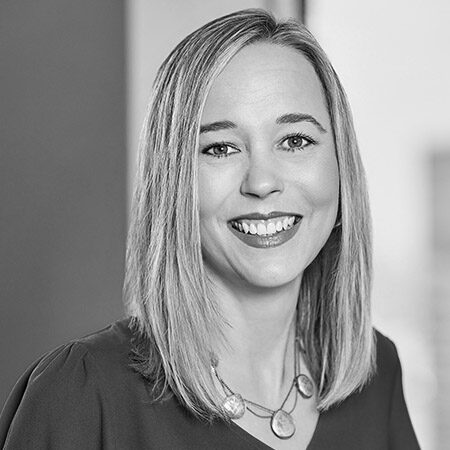In recent years, there have been countless discussions and studies striving to pinpoint what, exactly, employees want and need if they are to forego the comforts of home and the freedoms of remote work to return to the workplace on a regular basis. The list of wants and needs is vast, meandering from accessible mental health services, elevated hygiene, and a greater sustainability commitment to improved workplace culture, casual collaboration spaces, and an integration with nature.
While it is not realistic for employers to meet the desires of every employee when welcoming them back to the workplace, determining what will have the greatest impact on the greatest number of employees is a reasonable place to start. Several recent studies provide guidance. A 2022 study from insurance company Aflac states that 59% of American workers are experiencing at least moderate levels of burnout.
Another study, published this year in the Harvard Business Review, finds that taking consistent breaks throughout the day improves employee productivity and well-being. Enter the employee break room. No, not the 1970s model with glaring fluorescent lights, an out-of-order microwave, a Formica countertop held together with duct tape, and an always-empty coffee pot; rather, one that in its design, functionality, and amenities demonstrates a culture of care.
The following suggestions will help guide facility managers and employers as they look to boost the break room experience.
Employee-first space planning
Whether employers are creating an entirely new break room or working within an existing space, they need to approach its design from an employee-first perspective. An ideal space should provide employees with a visual, mental, and physical respite from their day-to-day duties.
For example, while making room for necessities such as a refrigerator, microwave, coffee maker, and sink, consider configuring the space to be less kitchen and more lounge by providing different seating options that can accommodate socializing and eating as well as personal quiet time.
Explore lighting options that provide a natural ambiance and appropriate brightness without doing harm to individuals or the environment. Fluorescent lights have long been a mainstay in American workplaces because they are energy efficient, readily available, and relatively inexpensive. But they are also made from toxic materials, emit harmful ultraviolet light, and have been known to cause health problems for those suffering from light sensitivity.
Because color is not only something seen but also something felt, make mindful color choices to ensure the break room is a place to escape to, not from. Green, for example, represents connection, blue is calming, yellow is associated with happiness, and orange is energetic.
Bring the outdoors and its many benefits in by incorporating indoor plants and natural materials, such as wood, stone, or metal, into the break room space. Plants are known to clean and humidify the air, reduce stress levels, and improve focus.
Functional hygiene
A recent study from Ipsos finds that 62% of Americans consider their health as being more important to them now than before the COVID-19 pandemic. And, as numerous studies have suggested, including one from the Cleaning Coalition of America, employees need enhanced workplace cleaning and disinfection practices to feel safe at work. Unfortunately, the employee break room—the area where employees should be able to reset and recharge—is one of the most germ-ridden spaces in the workplace, according to a study published in Science Direct.
The data from these studies provides facility managers with clear direction when it comes to making break room purchasing decisions: Choose products that are engineered to protect employees by helping to improve hygiene. Disposable dishware and cutlery, for example, are hygienic alternatives to permanent-ware and traditional cutlery. Fortunately, there are dozens of disposable options to consider that do not require employers to sacrifice quality, such as disposable dishware that is microwave-safe, cut-resistant, and soak-proof, as well as disposable cutlery that is durable and break-resistant.
To further elevate hygiene, consider using cutlery and napkin dispensers so employees only touch and take the product they need—unlike cutlery in open bins and napkins in exposed stacks. Paper towel and soap dispensers, too, warrant placement in the break room, as they help ensure employees can properly wash and dry their hands before and after eating. Automated
touchless paper towel and soap dispensers also help reduce touch points and the risk of cross-contamination.
Practical sustainability
It has long been suggested that doing what is right for the environment is right for individuals. The Planet Blue Ambassador program at the University of Michigan reveals the connection between individual well-being and sustainability, stating that human health is inseparable from environmental health.
Too often, however, the pursuit of hygiene—an employee priority—is considered contrary to the pursuit of sustainability. Fortunately, when it comes to the employee break room, that is simply not the case.
It’s not difficult to surmise the potential environmental benefits of indoor plants. Through photosynthesis, they convert carbon dioxide into oxygen. But what about disposable dishware and cutlery or paper towels? With just a little product exploration, facility managers will quickly find options that positively impact both hygiene and sustainability.
Consider bamboo cutlery. It performs like traditional cutlery, is single use like disposable cutlery, but it is made from natural resources and is industrial and home compostable. Similarly, polylactic acid or polylactide (PLA) cutlery is made from renewable material and is industrial compostable.
Insulated hot cups provide a hygienic, single-use beverage experience and, unlike most disposable cups, eliminate the need to double-cup or use a corrugated sleeve to help prevent heat transfer. Single-use cups made from recovered paper or recycled content help divert waste from going to a landfill.
Innovations in dispensing systems for cutlery, napkins, and paper towels enable one-at-a-time dispensing, which helps reduce both product usage and waste by encouraging employees to only take what they need. New dispenser designs and capacity features also reduce change-out waste.
Rejuvenating rest
An employee break room demonstrates a culture of care by providing a space where employees can take a few minutes for themselves. Employers who recognize the importance of breaks—and act on it—will reap the many benefits that come with rejuvenated workers. As transformationalist Hiral Nagda said, “Sometimes doing nothing makes way for everything.”





